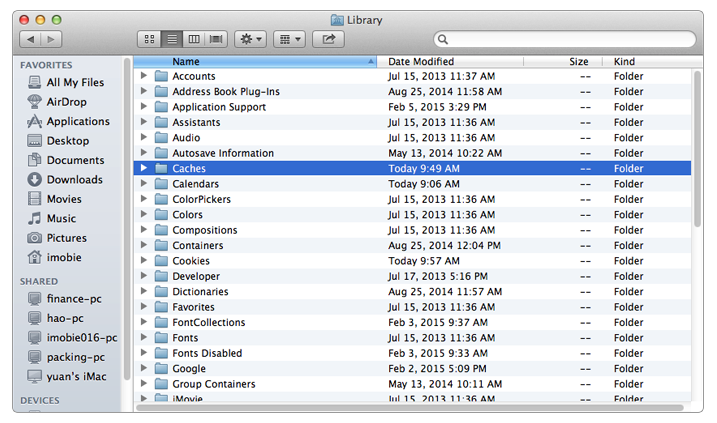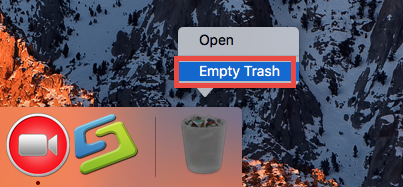- How To Search For Files In Library Folder On Mac Ipad
- Library Folder On Mac Caspian
- How To Search For Files In Library Folder On Mac Download
When you’ve got loads of files — hundreds or even thousands isn’t unusual after a couple years using the same Mac — it can be difficult to get the correct file path. We attempt to solve this problem in this article for those tired of looking for files and file paths on a Mac.
After trying Spotlight Searches or browsing through files, you might be ready to give up. At times, not knowing the right name can cause software conflicts. But don't despair. There is always a way to locate a file path.
How to get a file path on a Mac?

In the Go To The Folder field, enter /library/ Click Go. Access the Library folder directly through the Terminal: Click the Spotlight Search icon in the upper right corner; Enter 'Terminal' In the Terminal window, enter 'open library'. The library opens in a Finder window. To permanently show all hidden files: Open the Applications Utilities folder, and then double-click Terminal. How to find other hidden files on Mac? It isn't always easy to know where you’ve put every file on your Mac. After a couple years of constant use, a Mac can start to resemble a cluttered old-school file cabinet. Files in places that once make sense, but are now in the wrong place.
To get a basic understanding where you file is located, just right click the file.
- Right-click the file
- Click Get Info
Look up what’s written under Where:
The selected area shows the enclosed folder of your document.
How to copy the file path
Copying any text from the previous window isn’t easy, obviously. But still you need a complete file address that you can copy and paste anywhere. So you do one extra step:
- Click on Finder
- Click View in the upper bar
- Click Show the Path Bar
Interestingly, the file path will immediately appear underneath the Finder window.
- Now, Control + Click the file you want the location for
- Hold the Option key
You will see the new command that has appeared in the context menu — Copy …. as Pathname
- Click on the selected command
You are now ready to paste. This information is pasted into the Clipboard. Make sure to complete pasting/moving it elsewhere, or this will be lost and you will need to find the folder again.
And that is how to get folder path in Mac. Nice and simple.
How to find the file path using Terminal
Also known as a folder path, or directory path, they aren't always easy to find. When every other method has failed, turn to Terminal as your solution.
- Go to Applications > Utilities.
- Launch Terminal.
- Make sure you are using it as a Super User (which means being logged in as an Admin), so type in
sudo su— then press Return. - Now you need to have something of an idea what this file might be called, so once you do, type in the following (the name in the middle is where you’d put a file name):
find / -name randomfilename -print - Give it time to process the query, which could take several minutes.
- A list of names should appear, some or many of which you can ignore as they will be followed by file-end names, such as “operation not permitted”; so focus on the ones that make the most sense, such as:
/Library/Application Support/randomfilename/settings/ - Now copy and past the full name and drop it into Finder or Spotlight Search.

Hopefully, this will bring you to the file you need.
A shortcut to see unlisted (grayed out) files
For those who love Apple, which for many is more than a tech company, it’s a representation of a lifestyle, a brand that has many fans, we’ve got a fun fact for you. Did you know there is a shortcut combination to see hidden files?
This shortcut should work for anyone running macOS Mojave, High Sierra, and Sierra, and anything beyond OS 10.12. Here is how you access the shorcut:
- From Finder, go anywhere where you suspect there are hidden files, such as the the Macintosh HD root directory, or Home folder
- Next, press down the Command + Shift + Period keys, which should toggle to show hidden files in that folder.
- As you press the shortcut the keys are visible: when you switch it off, they dissapear again.
Any hidden files that have been made visible will have greyed out names and icons.
How To Search For Files In Library Folder On Mac Ipad
How to find other hidden files on Mac?
It isn't always easy to know where you’ve put every file on your Mac.
After a couple years of constant use, a Mac can start to resemble a cluttered old-school file cabinet. Files in places that once make sense, but are now in the wrong place. Files and folders that should be in the right place, but have been put somewhere else. Files that seemingly don't exist, or are floating around elsewhere.
One solution to this is to download CleanMyMac X. It’s a handy and easy-to-use Mac performance improvement app. It comes with a few tools for finding unlisted, hidden, and large old files that have slipped through the cracks. Here is how you use it:
- Download CleanMyMac X (download a free edition here).
- Click on Space Lens.
These blue bubbles represent all your documents in relation to their size. You can dive into each of these folders to reveal their contents — a more visual alternative to Finder.
You can also use the Large & Old files scanner (in the same app). Either or both features will highlight a few gigabytes worth of space you can free up, uncovering files that can easily slip through the cracks and become forgotten. By the way, CleanMyMac X is notarized by Apple, which means this app is malware-free and safe to use on your Mac.
For those with a lot of files, or Mac users badly in need of making more hard drive space, CleanMyMac X is an invaluable tool. We hope you found this article useful about how to locate and copy the file path details when searching for what you need.
You may need to access content in the user Library folder to troubleshoot problems with your Adobe applications. The user Library folder is hidden by default in macOS X 10.7 and later releases. Use one of the following methods to make the user Library content visible.
Hold down the Alt (Option) key when using the Go menu. The user Library folder is listed below the current user's home directory.
Note: After you open the Library folder, you can drag the Library icon from the top of that window to the Dock, sidebar, or toolbar to make it readily accessible.
Mar 29, 2019 I sync my entire library to the cloud, which I use on mobile devices for reference. (I have played with editing, but it is still far too restrictive.). Moving LightRoom Classic CC from Mac to PC Correct Answer by johnrellis. Most Valuable Participant, Mar 29, 2019. Lightroom library move pc to mac. How to Move Your Lightroom Catalog Between PC and Mac Step 1: Figure Out Where Your Lightroom Catalog Lives on Your PC. Step 2: Open the Folder Containing the Catalog. Step 3: Copy Both the Catalog File and the Previews. Step 4: Open Lightroom and Open the Catalog. Step 5: Enjoy Lightroom on. Lightroom is a cross-platform license, so your serial number and install disks will work on both Mac and Windows. No need to buy a new license as long as you're only running on up to two of your personal computers. Catalogs are also cross-platform. You should be able to transfer your catalog and images to your mac. How to synchronize the Lightroom Library between pc and mac Today I want to show you a possible solution to synchronize the Lightroom Library between a pc and a mac. This is usefull if you want to import the data for example on a MacBook for vieweing and sorting it.
For more information, explanations, and ideas, see 18 ways to view the ~/Library folder in Lion and Mountain Lion.
More like this
Library Folder On Mac Caspian
Twitter™ and Facebook posts are not covered under the terms of Creative Commons.
How To Search For Files In Library Folder On Mac Download
Legal Notices Online Privacy Policy